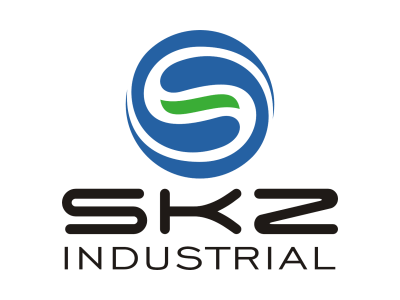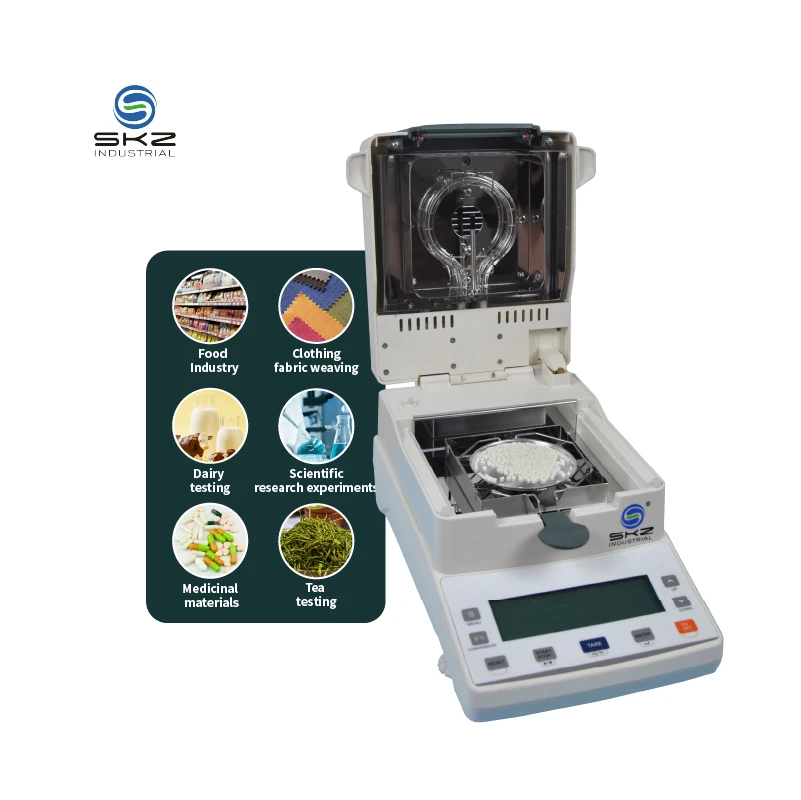Säännöllisten kalibrointitarkistusten laiminlyönti digitaalisille kosteusmittareille
Miksi kalibrointi takaa tarkan kosteuspitoisuuden mittauksen
Kalibrointi on välttämätöntä saavuttaaksesi tarkan kosteuspitoisuuden mittaukset digitaalisten kosteusmittareiden avulla. Se säätää mittarin kompensoimaan anturin suorituskyvyn vaihtelut ja varmistamaan tarkkuuden mittauksissa. Ilman säännöllistä kalibrointia mittaustarkkuus voi heiketä merkittävästi. Tutkimukset osoittavat, että kalibroimattomien laitteiden mittaustuloksissa voi esiintyä jopa 10 % virheellisyyttä, mikä voi vaikuttaa kriittisiin arviointeihin eri teollisuudenaloilla. Asiantuntijat suosittelevat digitaalisten kosteusmittareiden kalibrointia ennen ensimmäistä käyttökertaa sekä kuukauden välein tai merkittävien lämpötilavaihteluiden jälkeen. Tämä ennakoiva lähestymistapa tukee mittaustarkkuuden ylläpitämistä ja siten luotettavan kosteudenarvioinnin varmistamista.
Kuinka suorittaa peruskalibrointitesti kotona
Peruskalibrointitestin suorittaminen kotona on helppoa ja parantaa digitaalisten kosteusmittareiden luotettavuutta. Aloita keräämällä kalibrointivakiosta, kuten tunnetun kosteuspitoisuuden näytteistä tai tislattusta vedestä, joiden avulla mittaria testataan. Tämän jälkeen toimi valmistajan ohjeiden mukaisesti ja säädä asetuksia vertaamalla vakiosta saatuja lukemia mittarin antamiin tuloksiin. Säännöllinen kalibrointi, vaikka se tehtäisiin yksinkertaisesti kotona, voi merkittävästi pidentää kosteusmittarin käyttöikää ja varmistaa sen luotettavuuden, estämällä lukemien epäjohdonmukaisuudet, jotka voivat johtaa väärin materiaalien arvioinnissa.
Kalibroimattoman mittarin käyttöön liittyvät seuraukset
Kalibroimattoman kosteusmittarin käyttö voi johtaa virheellisiin kosteusarviointeihin, mikä saattaa aiheuttaa materiaalien väärinkäytön. Tällaiset epätarkkuudet ovat erityisen haitallisia rakennus- ja maataloustaloissa, joissa kosteuteen liittyvät virheet voivat vahingoittaa materiaaleja ja lisätä huolto- ja korjauskustannuksia. Emperiset tiedot osoittavat, että yritykset ovat kärsineet tappioita jopa 15 % kosteuden hallinnan heikommasta laadusta johtuen, joka johtuu säännöllisen kalibroinnin laiminlyönnistä. On erittäin tärkeää varmistaa, että kosteusmittari on tarkasti kalibroitu, jotta näiltä kalliilta ongelmilta vältytään ja toiminnallinen tehokkuus sekä sijoitukset voidaan turvata.
Virheellinen anturin asennuspaikka ja syvyyden mittaus
Erilaisten materiaalien pinnoitusyvyyden ymmärtäminen
Tarkan kosteuspitoisuuden mittaustulokset digitaalisilla kosteusmittareilla riippuvat huomattavasti nastojen oikeasta syvyydestä, sillä jokaisella materiaalilla on omat vaatimuksensa. Esimerkiksi puun kohdalla nastojen pitää yleensä tunkeutua syvemmälle kuin betonissa saadakseen luotettavia kosteusarvoja. Tämä syvyyden tarkkuus auttaa minimoimaan virheiden syntymistä kosteusgradientin vaikutuksesta, joka voi vääristää tuloksia, mikäli sitä ei hallita asianmukaisesti. Kosteusmittareita käyttävien alojen tulisi kiinnittää erityistä huomiota henkilöstön kouluttamiseen oikeilla nastojen sijoitusmenetelmillä vähentääkseen mittausvirheitä, jotka voivat johtaa väärinymmärryksiin ja kalliiseen virheelliseen toimintaan.
Välttämään virheellisiä lukemia pinnan ja ytimen kosteustasojen välillä
Pinnan kosteuden ja ydinkosteuden erottaminen on elintärkeää tarkan arvioinnin kannalta, koska pinnan kosteus antaa usein harhaanjohtavia tuloksia. Kosteusgradienttien ymmärtäminen materiaaleissa ei ainoastaan auta määrittämään niiden kunnossäilymistä vaan myös vaikuttaa pitkän aikavälin suorituskykyä koskeviin päätöksiin. Asiantuntijat suosittelevat useiden mittausten tekemistä eri syvyyksillä, jotta saadaan kattava kuva tilanteesta. Tällainen lähestymistapa voi estää kalliita virheitä, jotka johtuvat usein harhauttavista pintamittauksista, tarjoamalla tarkemman kosteusprofiilin.
Kun iskuprokkeja tulee käyttää syvän materiaalianalyysin yhteydessä
Vastapainotangot ovat keskeisiä syvien materiaalien arvioinnissa, erityisesti sovelluksissa, kuten rakennus- ja valmistusteollisuudessa, joissa tarkka syvyys on kriittistä. Vastapainotankojen oikea käyttö mahdollistaa tarkan ydinveden mittaamisen, joka on välttämätöntä materiaalien kestävyyden varmistamiseksi. Ohjeet suosittelevat johdonmukaisesti vastapainotankojen käyttöä paksujen materiaalien, kuten betonin ja komposiittipuiden, analysoinnissa. Tämä tekniikka auttaa saamaan kattavan kosteusprofiilin, joka on perustavaa materiaalin laadun varmistamiseksi ja estämään kosteuden vaihteluihin liittyvät mahdolliset ongelmat.
Ei huomioida materiaalikohtaisia asetuksia digitaalisessa Vihreysmittar
Puulajien korjaustaulukoiden keskeinen rooli
Puulajien kosteuspitoisuuskorjaustaulukoiden merkityksen ymmärtäminen on tärkeää, kun käytetään digitaalista kosteusmittaria. Eri puulajeilla on omat kosteuspitoisuusominaisuutensa ja sähkönjohtavuutensa, joihin liittyy tarve erityisille korjauskertoimille tarkan mittaustuloksen saamiseksi. Esimerkiksi männyn ja mahonkin kosteuden mittaamisessa vaaditaan erilaisia säätöjä välttääkseen merkittäviä virheitä. Itse asiassa tutkimukset osoittavat, että korjaustaulukoiden huomiotta jättäminen voi johtaa virheisiin, jotka vaihtelevat 5 %:sta 30 %:iin riippuen materiaalin tyypistä. Siksi meidän tulisi aina varmistaa, että digitaalinen kosteusmittari on säädettty oikealla tavalla käsiteltävän puulajin mukaan. SKZ Industrial Co., Limited on yksi yrityksistä, jotka ovat edelläkävijöitä näiden taulukoiden tarjoamisessa, ja se tunnetaan innovatiivisista kosteusmittareistaan, jotka on tehty eri puutyyppeihin ja niiden erityistarpeisiin.
Lämpötilakompensaation huomioimattomuus äärimmäisissä olosuhteissa
Lämpötilakorjaus digitaalisissa kosteusmittareissa on tärkeä asetus, erityisesti äärimmäisissä olosuhteissa työskenneltäessä. Lämpötila voi vaikuttaa kosteusmittauksiin huomattavasti, mikä vaatii korjausasetusten säätämistä nykyisten ilmastonolosuhteiden mukaan. Tämän tärkeän säädön sivuuttaminen voi johtaa virheellisiin tuloksiin, joilla voi olla yli 80 %:n vaikutus kosteusmittauksiin tällaisissa tilanteissa. Siksi on välttämätöntä asettaa tarkat lämpötilakorjaukset luotettavien tietojen saamiseksi, mikä puolestaan parantaa materiaalien käsittelyä ja turvallisuusprotokollia.
Miksi betonitilaa ei tulisi käyttää orgaanisille materiaaleille
Tiilimoodin käyttö digitaalisessa kosteusmittarissa, joka on optimoitu tiheämmille materiaaleille, voi johtaa virheellisiin korkeisiin lukemiin käsiteltäessä orgaanisia materiaaleja. Tämä väärä tulkinta voi johtaa vaaratilanteisiin eri sektoreilla, kuten rakennus- ja maatalousalalla. Tiilimoodi on erityisesti suunniteltu materiaaleille, kuten betoni, joissa tiheys vaikuttaa kosteuden havaitsemiseen. Sen käyttö orgaanisiin materiaaleihin heikentää kosteuden arviointien tarkkuutta. Näin ollen asiantekijät korostavat muiden kuin materiaalityyppiin sopivien moodien välttämistä, jotta varmistetaan tarkan valvonnan toteutuminen ja katastrofaalisten virheiden estäminen.
Pinnan kosteuskontaminaation ongelmat huomiotta jättäminen
Kondensoituminen vääristää digitaalista Vihreysmittar Luettavat arvot
Pintakondensaatio voi huomattavasti vääristää kosteusmittarin lukemia, minkä vuoksi sen tunnistaminen ja huomioiminen ennen testausta on erittäin tärkeää. Pintakosteuuden läsnäolo kondensaation seurauksena voi johtaa väärään käsitykseen materiaalin todellisesta kosteuspitoisuudesta. Tutkimukset ovat osoittaneet, että korkeassa ilmankosteudessa kondensaatio voi aiheuttaa 20 %:n laskun mitatuissa arvoissa. Tämä ero korostaa pintakosteuksien, jotka johtuvat kondensatiosta, ja materiaalin sisällä olevan kosteuden erottelun tärkeyttä. Oikeat säädöt ja kondensaation vaikutuksiin tutustuminen voivat johtaa tarkempiin mittauksiin.
Oikeat pinnanvalmistelutekniikat ennen testausta
Pinnan esikäsittely on tärkeää, jotta kosteuspitoisuusmittaukset saadaan tarkoiksi. Pintojen puhdistaminen ennen testaamista voi estää epäpuhtauksia, kuten pölyä, öljyjä ja roskia, aiheuttamasta vääriä positiivisia tuloksia. Järjestelmällinen puhdistusmenetelmä sisältää näiden epäpuhtauksien poistamisen ja varmistaa, että pinnat ovat kuivia ennen mittauksen tekemistä. Pinnan hankaaminen voi parantaa kosteuden mittaustarkkuutta tarjoamalla puhtaan ja yhtenäisen alueen mittaukselle. Keskittymällä tehokkaaseen puhdistukseen ja valmisteluun käyttäjät voivat saavuttaa luotettavampia tuloksia kosteusmittareillaan.
Väärien positiivisten tulosten tunnistaminen jäljellä olevan vesialtistuksen seurauksena
Veden jäännösten aiheuttamien vääräpositiivisten tulosten tunnistaminen on ratkaisevan tärkeää tarkan kosteuden mittaamiseksi. On tärkeää käyttää useiden mittauspisteiden lukemia yhtenäisesti arvioitaessa materiaalin kosteusprofiilia, mikä vähentää virheellisten tulosten mahdollisuutta. Vääräpositiiviset tulokset voivat syntyä kosteuden jäännösten vuoksi pinnalla tai ympäristön muutoksista, joita ei ole otettu huomioon. Näiden erojen torjumiseksi ammattimainen koulutus voi olla hyödyllistä käyttäjille, auttaen heitä tunnistamaan ja tulkemaan näitä vaihteluita. Tällainen koulutus parantaa mittauksen tarkkuutta ja varmistaa, että kosteusmittaukset heijastavat todellisia materiaalitiloja.
Suhteellisen ja absoluuttisen kosteuden asteikoiden ymmärtäminen
Ymmärtää ero suhteellisen ja absoluuttisen kosteusasteikon välillä on elintärkeää tarkan kosteusanalyysin kannalta eri teollisuudenaloilla. Suhteelliset asteikot mittaavat usein kosteusarvoja, joita ovat vaikuttaneet ulkoiset ympäristöolosuhteet; esimerkiksi huomioidaan tekijät kuten lämpötila ja ilmankosteus. Tämä mittausmenetelmä on erityisen hyödyllinen maatalouden olosuhteissa, joissa ympäristötekijät vaihtelevat. Toisaalta absoluuttiset asteikot ilmaisevat konkreettisen kosteusmäärän ilman ulkoisia vaikutteita. Tämä voi johtaa tarkempiin arviointeihin teollisissa sovelluksissa, joissa johdonmukaisuus on ensisijainen. Näiden asteikkojen väärin tulkinta voi johtaa heikkoon päätöksentekoon, etenkin kosteudensensitiivisissä ympäristöissä, kuten elintarviketuotannossa ja rakennusteollisuudessa, mikä korostaa alan erikoistuneen koulutuksen ja tietoisuuden tarvetta.
Värikoodattujen hälytysjärjestelmien dekoodaus oikein
Värimerkityt varajärjestelmät tarjoavat välittömät visuaaliset vihjeet, jotka ovat tärkeitä kosteuden hallinnassa tehtäviä arviointeja varten. Jokaisen värin merkityksen ymmärtäminen on tärkeää, erityisesti ympäristöissä, joissa nopeita päätöksiä vaaditaan, kuten palokunnassa tai kemikaaliteollisuudessa. Esimerkiksi vihreä valo voi tarkoittaa turvallista kosteustasoa, kun taas punainen varoitus voi osoittaa kriittistä tilannetta, johon vaaditaan nopeaa toimintaa. Virheellinen tulkinta voi johtaa vakaviin seurauksiin, kuten laitevikojen tai turvallisuusriskien syntymiseen. Teollisuuden parhaat käytännöt suosittelevat säännöllistä koulutusta näiden järjestelmien käytöstä, jotta henkilökunta pystyy reagoimaan nopeasti ja tarkasti tulkintojensa perusteella, mikä takaakin toiminnan turvallisuuden ja tehokkuuden.
Milloin kannattaa luottaa (ja milloin kyseenalaistaa) automaattiskalausominaisuudet
Kosteustestauslaitteiden automaattiset kalibrointiominaisuudet tarjoavat käyttöä helpottavan toiminnon ja voivat parantaa tarkkuutta, mutta käyttäjien tulisi silti pysyä valppaina suorittamalla satunnaisia manuaalisia tarkistuksia. Näihin ominaisuuksiin tukeutuminen liikaa voi johtaa laiminlyöntiin, mikä voi aiheuttaa merkittäviä virheitä ajan mittaan laitteen kulumisen tai ympäristömuutosten vuoksi. Asiantuntijat korostavat, että on tärkeää löytää tasapaino automaattisten toimintojen hyödyntämisen ja manuaalisten varmistusten välille, jotta kosteusmittaukset säilyvät luotettavina. Satunnaisten varmistusten toteuttaminen takaa virheiden estymisen ja tukee mittausten yhtenäisyyttä sellaisissa toimialoissa kuin lääketeollisuus ja elektroniikan valmistus, joissa tarkkuus on kriittistä.
Table of Contents
- Säännöllisten kalibrointitarkistusten laiminlyönti digitaalisille kosteusmittareille
- Kalibroimattoman mittarin käyttöön liittyvät seuraukset
- Virheellinen anturin asennuspaikka ja syvyyden mittaus
- Ei huomioida materiaalikohtaisia asetuksia digitaalisessa Vihreysmittar
- Pinnan kosteuskontaminaation ongelmat huomiotta jättäminen
- Suhteellisen ja absoluuttisen kosteuden asteikoiden ymmärtäminen

